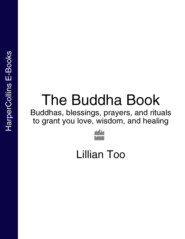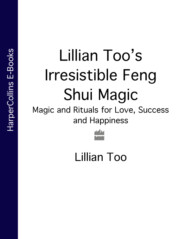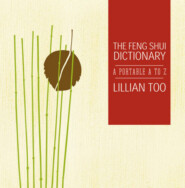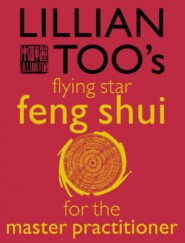По всем вопросам обращайтесь на: info@litportal.ru
(©) 2003-2024.
✖
Lillian Too’s Smart Feng Shui For The Home: 188 brilliant ways to work with what you’ve got
Автор
Год написания книги
2019
Настройки чтения
Размер шрифта
Высота строк
Поля
However, it is also important to remember the locations in which it is not advisable to place them at all.
Mirror placement
Full wall mirrors should be high enough so that they do not seem to “cut” into the head of anyone, or cut off their feet, so it is best that they start from floor level.
The wall mirror should ideally reflect an auspicious space, so it should not reflect a toilet, a staircase, a kitchen stove, or oven, and most importantly it should not directly reflect the main door, as this creates an immediate outflow of the fresh chi energy that has only just entered the home. If you have installed such a mirror, then place something between the mirror wall and the door so that you force the chi to linger and be diverted.
It is best not to install mirrors anywhere in the bedroom, especially when it reflects the bed directly. This is a serious affliction and will create sleepless nights at best and severe problems between the couple sleeping on the bed at worst. If you have to have a mirror in the bedroom, never have it facing the bed, and cover it at night.
Mirrors are excellent in the dining room as they symbolically double the food at the table. However do not have a mirror reflecting the kitchen stove, as this accentuates the Fire Element and has the effect of bringing about accidents for the residents.
Mirrors are preferable to mirror tiles, but if you do use tiles, make sure that they do not cause any degree of distortion.
Mirrors directly above a fireplace are a good feature as long as the mirror is not reflecting the door. In small spaces such as narrow foyer areas, hallways, or small corners, mirrors are excellent conductors of chi. Also, a mirror on the wall is excellent for breaking the monotony of a long narrow corridor, and for slowing chi.
Mirror tiles should be large and not cause distortion. Healthy plants reflected in the mirror symbolically double the auspicious chi from the plant.
31 – protruding corners can strengthen luck
When home extensions are built, then the luck of the corner is extended, and the luck of the family member represented by that corner can be considerably enhanced.
However, extensions that stick out must be analyzed according to the Element attribute of the shape of the extension. You need to ensure that the shape of the extension does not represent an Element that clashes with the Element of the corner, or the overall shape of the home. This analysis can be undertaken by studying Element relationships according to the three Element cycles (see Chapter 3 (#litres_trial_promo).)
Dining room extensions
In the example here, you can see that this apartment has a protruding corner in the dining room. This is auspicious since the dining room exerts an important effect on the family’s fortunes. In this case, the corner represented is also the southeast, and the strengthening of this corner will enhance the wealth luck of the family. It will also benefit the eldest (or only) daughter of the family. As the extension here is not too large it will also not overwhelm the rest of the house – and the general shape of the home is rectangular, which signifies the Wood Element. Because the extension is in the southeast the Wood Element is further enhanced. Finally, the shape of the rectangular extension is also well balanced with the rest of the house, so overall this is an excellent example of a very lucky extension.
An extension in the southeast boosts wealth. Its rectangular shape links to the Wood Element.
Building in the west
If the extension is in the west, children’s luck is enhanced, so it may help if you are having problems starting a family. The west also benefits the youngest daughter. However, a circular extension is best, as this relates to the shape of metal – the Element of the west.
If the extension you are planning is a rectangle, which you are adding to another rectangle, this is balanced and there will be no problems of Elements clashing as the extension and the main part of the house have the same shape.
When a semi-circular extension is added to a rectangle, you are adding Metal to Wood which is counter-productive as Metal destroys Wood. Also, adding a circular extension to a square house is not good as Metal exhausts Earth.
32 – linking element shapes to your home
There are five basic shapes which link to the five elements, and these offer clues when you need to analyze the suitability of the shapes of objects, furniture, and structures within your living space.
Squares or rectangles
Square or rectangular shapes are generally the best to use, and these represent the Earth and Wood elements respectively. Furniture such as tables and cupboards are good when in these basic shapes as they signify support, security, and stability which are associated with the grounding energy of Earth and the growth energy of Wood. The square shape lends itself easily to feng shui enhancements based on compass guidelines, and is one of the best shapes to use in the home – it has no missing or protruding corner, is perfectly balanced, and resembles the Lo Shu Square. The Wood shape is usually an elongated rectangle and is considered very auspicious.
Circular shapes
Round or circular shapes belong to the Metal Element. Round structures and coffee tables send out strong energy that is associated with the Metal Element. It also signifies gold or money, which is why the Chinese are also so fond of round dining tables. The shape is also believed to represent heaven. Semi-circular extensions and bay windows are also thought to be auspicious, although as they are half circles there is the unfortunate connotation of being incomplete.
Fire shapes
Pointed and triangular shapes with an apex link to Fire, so they signify rising yang energy. This shape is usually too strong for most people as the yang chi can be excessively dominating. So I usually do not recommend this shape for interiors.
Water shapes
These shapes are wavy. This is an Element that is best represented as subjects of decorative art pieces and in patterns and design motifs in interior decor, or shapes of curtains, for example, rather than being used as items of furniture or structures. However, give full rein to your creative skills, if you so desire. What is important is to make an energy field of the Element desired and this can be done in whatever way appeals to you.
Circles link to the Metal Element, triangles show Fire, and wave shapes represent the Water Element.
33 – shapes and their symbolic associations
According to many traditional feng shui masters, shapes can also be analyzed as friendly or hostile energy depending on what they look like and on what word, object, or animal they resemble.
Particular attention was paid in the old days to avoiding the use of shapes which resembled Chinese characters that had unlucky meanings. On a similar theme, they would often design buildings and floor plans in the shape of characters that had lucky meanings.
Stepped or narrowing shapes
Shapes that look like steps, or which resemble a narrowing at the mid-point, are regarded as inauspicious, as the connotations are thought to be negative. The Chinese have always been suspicious of anything irregular or asymmetrical since imbalance of this sort is anathema to good luck. If you are not sure about a shape, it is always best to opt for ones that look complete and balanced, with all the sides of a similar height and width.
The shapes shown above resemble the Chinese characters “Ji,” which means good luck, and “Wang,” which means King. As both shapes are considered auspicious, designing a floor space or piece of furniture in these shapes would be deemed to bring good fortune to the user and the home.
The two shapes above are considered to be inauspicious since they resemble Chinese words that mean “Xia,” or “down,” and “Xiong,” or bad luck, respectively. These two shapes are therefore considered very unlucky.
34 – auspicious shapes for tables
One of the best dining table shapes to use in the home is round, although rectangular, square, or the eight-sided Pa Kua shape can also enhance your luck.
Always select the dining table with care, as the feng shui implications are significant.
Round dining tables
These are always preferred by the Chinese, because in addition to representing the auspicious gold element, a circular shape also denotes that everything to do with the family’s wealth and continued wellbeing will proceed smoothly. Parents and children are considered to have a greater chance of maintaining harmonious relationships when the dining table is round. Usually, however, the round dining table needs to seat at least eight people and upwards with three generations seated eating together. This means the family’s wealth luck will continue through the generations.
Вы ознакомились с фрагментом книги.
Приобретайте полный текст книги у нашего партнера:
Приобретайте полный текст книги у нашего партнера:










